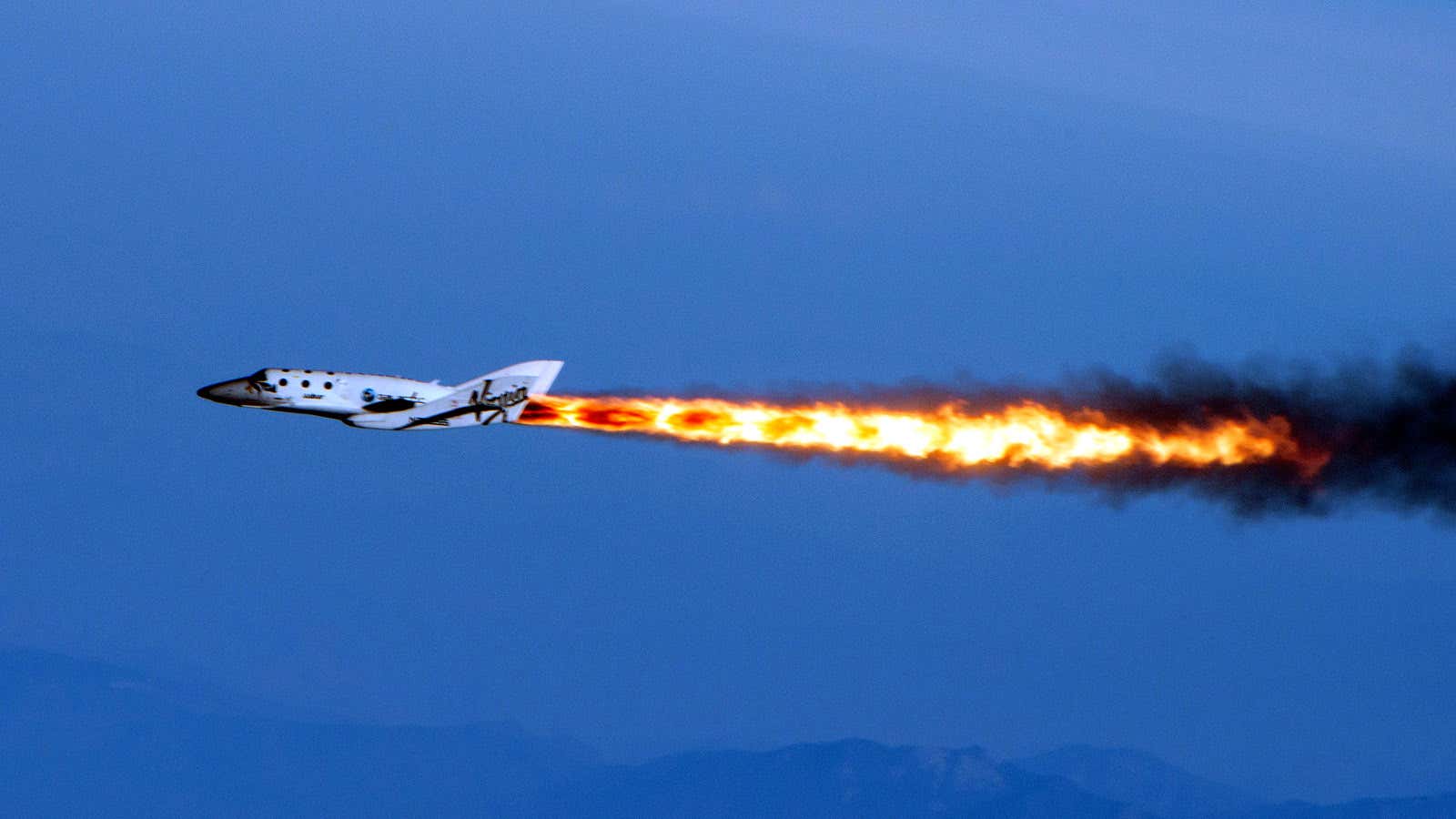The commercial space industry had its second major accident this week when Virgin Galactic’s SpaceShipTwo dropped from the airplane that carried it some 50,000 feet over the Mojave desert. In a test flight, the space plane’s rocket engines ignited—and then something went wrong, destroying the spacecraft, reportedly killing one of its pilots, and leaving the other in serious condition.
The accident follows the Oct. 28 failed launch of an Orbital Sciences rocket attempting to carry out a commercial mission to the International Space Station.
Virgin Galactic, the space tourism company founded by British tycoon Richard Branson, has developed a rocket-powered space plane to fly tourists just above the 100km-altitude demarcation line into space before returning to earth. Some 700 customers have paid $250,000 deposits to ensure a ride on the plane in the future.
In a recent interview, Branson said that his company would begin flying into space before Christmas, and that he and his son Sam would be passengers on the craft in the new year. Asked about the risks involved, Branson said,
That’s why the program has taken three years longer than we’d hoped. But we believe we’re there now. The rocket is performing beautifully. We have lots more test flights before we go. We’ll actually put the spaceship into space before the end of this year, where there’ll be a number of flights into space before I take him. But, I’m not going to put him up there or our customers up there until we really feel we’ve got it absolutely right.
The flight marks the first firing of the plane’s rocket engines since February, and the first time a new mixture of fuels has been tested in flight. In May,the company, in conjunction with its chief contractor, Scaled Composites, decided to adopt a new kind of plasticine fuel that promised better performance for its plane. SpaceShipTwo’s rocket engine was originally designed by Sierra Nevada Corp., which recently lost a contract competition with Boeing and SpaceX to carry American astronauts to the International Space Station. UPDATE, 6:13 p.m. SNC says it “had no involvement in the build or qualification testing of the motor used in this flight, nor in the integration of this motor to SS2,” and that it stopped working on the project in May.
While it will be hard to draw any kind of conclusions about the state of the space industry until the causes of these accidents are determined, both are a reminder that rocket flight remains a challenge even for modern technology.
